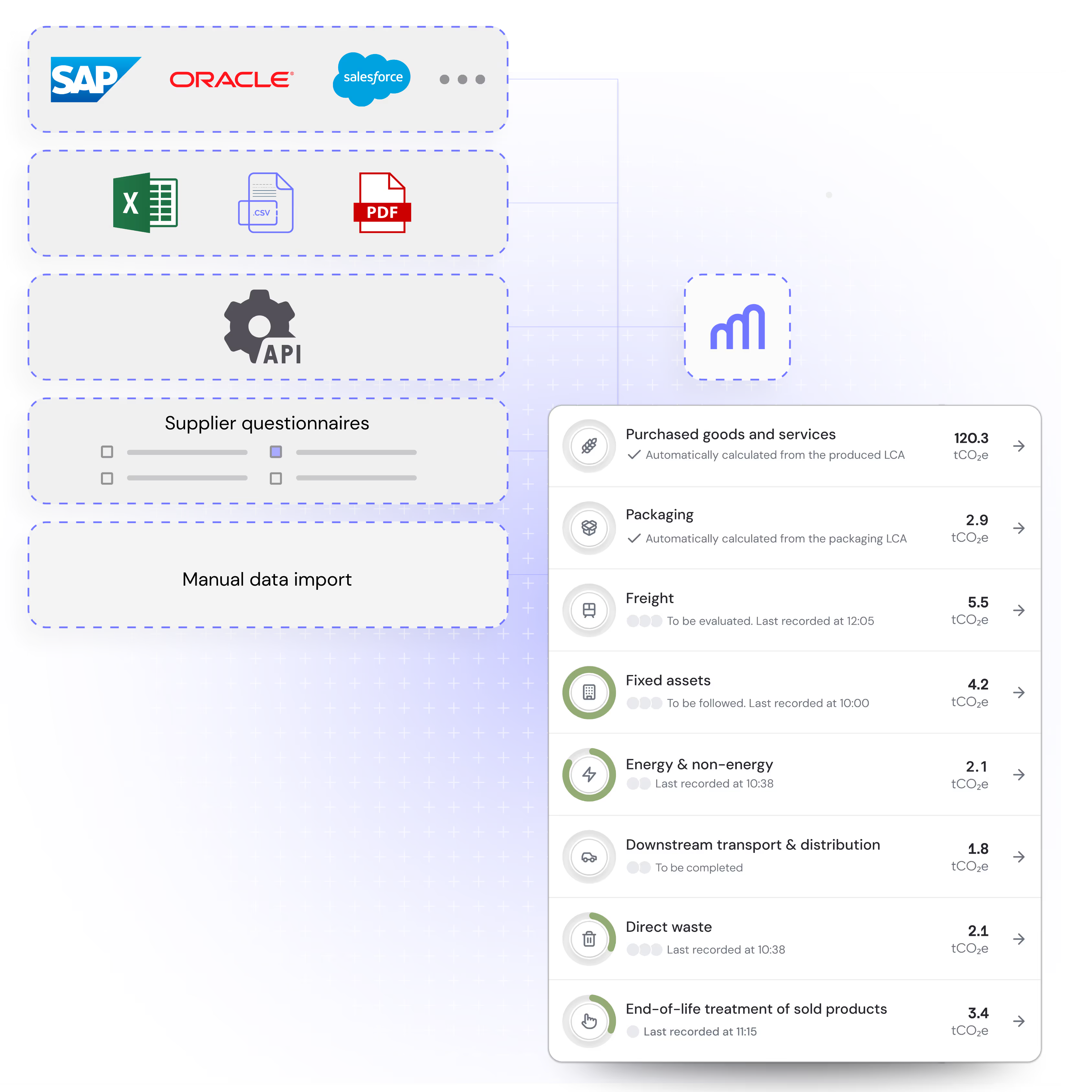MEASURE
Measure your full carbon footprint with confidence — across Scopes 1, 2, and 3 — and unlock the insights needed to execute your climate strategy.




Talk to us about turning carbon data into real impact.
An overview about the importance of measuring your Scope 1, 2 and 3 emissions
Scope 1 emissions are the direct greenhouse gas (GHG) emissions from your own operations, like factory heating or company-owned delivery trucks. Scope 2 emissions are indirect emissions from the electricity you buy. Scope 3 emissions are all other indirect emissions in your value chain, like from raw ingredients, transportation, consumption and waste. For food companies, Scope 3 is typically the largest part of the corporate carbon footprint.
The platform uses automated ingestion to gather emissions data from your operations and suppliers. Our smart tools validate and organize this data, giving you a clear, granular view of your emissions so you can pinpoint key areas for reduction.
Yes. The Carbon Maps platform helps you identify where emissions are highest and lets you simulate the impact of changes on your corporate carbon footprint, like using a new supplier or switching ingredients or packaging materials. This turns your carbon data into actionable insights for smarter business decisions.
The Carbon Maps platform centralizes your data with full audit trails, making it easy to generate reports that meet global standards like CSRD, SBTi, and CDP. You can report with confidence and clarity.